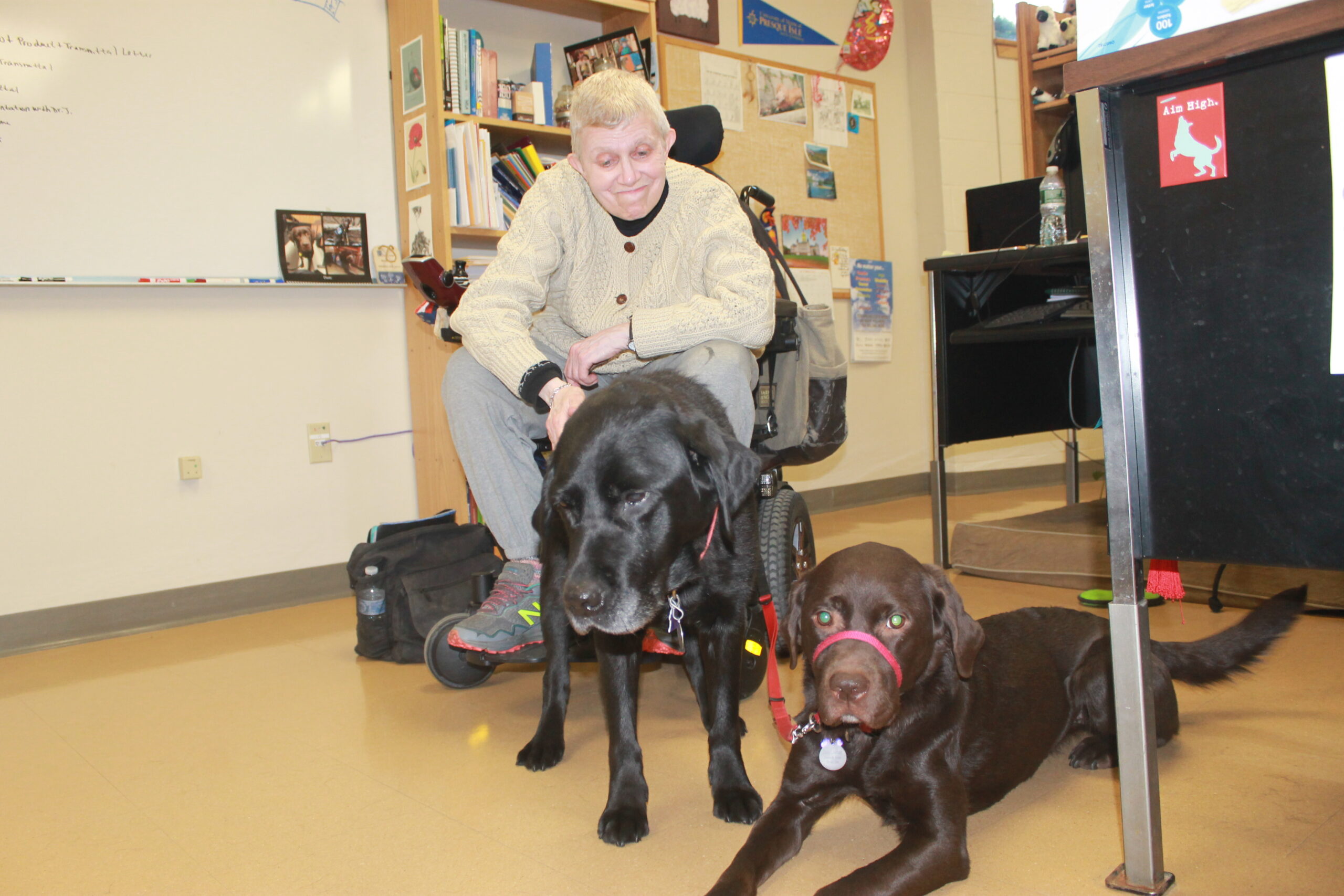
PRESQUE ISLE, Maine — The University of Maine at Presque Isle has completed an ambitious mapping project to make it easier for wheelchair users to find their way around campus.
The project itself began in the spring, when Jacquelyn Lowman, Ph.D., UMPI Diversity, Equity and Inclusion Council co-chair, professor of communication and journalism, and a long-time wheelchair user, realized that people new to UMPI would not know where the accessible doors, ramps and signs would be located on campus.
With this in mind, Lowman began her mission, with her faithful service dogs Saint and Dusty by her side, so that the University could better map where these accessibility services would be available.
“This is our 14th year at UMPI, and since we came here, we have been thinking ‘it would be really great if there was a map that showed the accessibility features of UMPI — entrances, ramps, things like that,” Lowman said. “If somebody is gonna do this, it probably needs to be us, because as far as we can determine, we are the only full-time employee with a full-time wheelchair in the University of Maine System.”
Lowman, Saint and Dusty made numerous trips around campus with Pamela Easler, administrative specialist of the college of Arts and Science. They documented areas around campus that featured accessibility services, as well as marked those that need improvements.
After going around campus, the documents were handed to Chunzeng Wang, Ph.D.,professor of Earth and Environmental Sciences, who used Geographic Information Systems in order to create a large map of the campus, now featuring accessibility areas. GIS is an information system that captures, stores, analyzes and displays geographic information.
“One of the things that we noticed when we did the mapping, was that our signage wasn’t very good,” Lowman said. “Being here for so many years, I know where everything is, but for somebody who is not familiar with the campus, they would see a sign and an arrow, but there’s nothing that tells you that you would need to go all the way around the building to get there.”
Lowman is also looking for ways to make campus accessibility even easier. She has recommended more parking spaces for the campus as well as more signs and automatic door button placements. Eventually, the elevators will need to be changed as well. The space inside is very small, and makes using them difficult, she said.
“We have been extremely fortunate with how the administration has embraced this,” Lowman said. “They have been very supportive, and have not questioned the need.”
The new parking spots and additional signs are estimated to be completed in the spring of 2022. The current version of the accessibility map can be found on UMPIs website.
An earlier version of this story misspelled Pamela Easler’s last name.







